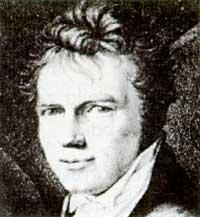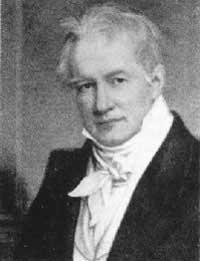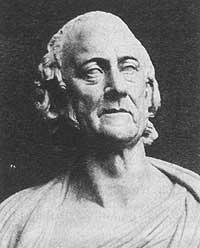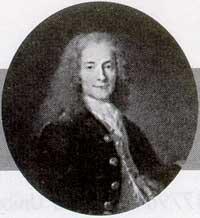Humboldt, Alexander
1995/08/02 Azkune Mendia, Iñaki - Elhuyar Fundazioa | Kaltzada, Pili - Elhuyar Zientziaren Komunikazioa
(1769-1859)
The full name of this German naturalist was Friedrich Wilhelm Karl Heinrich Alexander, and should not be confused with his brother Wilhelm, who visited Euskal Herria and other places.
We will talk about Alexander, especially what was the study of the Natural Sciences and the creator of geophysics.
Alexander Humboldt was born in Berlin on 14 September 1769. His father was an officer in the court of Frederick I the Great of Prussia and studied at the castle of Tegel. He then trained at the Universities of Berlin, Frankfurt and Gottingen. At first science was general and especially botany.

He made his first trip in 1790. He traveled west of Europe, where he met prestigious scientists. Back from the trip, he enrolled at the Freiburg Mining School, where he learned Werner's neptune very well. He worked in geology and mining engineering.
From 1792 to 1799, Alexander Humboldt was Inspector of Mines of the Prussian Government. He did a brilliant job of Bayreuth and occasionally analyzed the influence of the electric current on the muscles and nerves, a phenomenon that Galvani had just discovered. In Galvani's debate with Volta, Humboldt came out in favor of Galvani and it is known that Volta was right on this issue.
In 1796 his mother died. Because of his legacy, he didn't have to work to make a living. Therefore, following his tendency to travel, he made extraordinary excursions.
Buying scientific material in Paris meets naturalist Aime Bonpland. In 1798 both went from there to Spain. The Iberian plateau and the Canary Islands were analyzed. With the authorization of the two scientists in Madrid to visit the Spanish colonies in America, in 1799 they went to Venezuela. At first they had to protect themselves from British warships, as the Napoleonic wars were about to begin.
Over the next five years, nearly 10,000 kilometers traveled through Central and South America, collecting weather data, analyzing the Earth's magnetic field and studying other geophysical problems.
In 1800 they toured the territory of the Llanos of Venezuela and studied the Cassiquiare River. This river links the waters of the Amazon basin with those of the Orinoco. They therefore found that these two important rivers were united.
In 1801 Humboldt and Bonpland were in Colombia and in 1802 they studied the Chimborazo volcano. Despite the 6,272 meters high, both scientists reached a minimum height of 5,610 meters. On the American volcanoes, he said they were aligned, as they were in the direction of a deep surface gap.
After touring the Amazon basin in Peru, he studied the currents of the sea on the western coast of South America. That is why Humboldt is called a local marine current.
He also made known the ancient traces of the American Indians and brought to Europe the Peruvian guano as fertilizer.
Before returning to Europe, in 1803 and 1804, two scientists traveled to Mexico and the newly created United States. There they could see President Jefferson.
Humboldt spent another twenty years studying the data collected on that American trip.
However, when he lived in Paris in 1807 he wrote thirty books on American travel. Along with Gay-Lussac he also studied the composition of the atmosphere.
When Napoleon fell, Humboldt was placed at the service of Frederick III of Prussia. He worked as a diplomat and, having exhausted his patrimony, had to work in Berlin in 1827.
In 1829, invited by Tsar Nicholas I of Russia, he investigated the Asian territories. He toured Dzungaria and Altain.
At the end, seventy years old, he dedicated himself to organizing and configuring the knowledge acquired during his life. The goal was to meet in a work called Kosmos. I really wanted to analyze the earth from a cosmic perspective, considered as a set of one body. It can therefore be said that he is the creator of ecology. He achieved his goal, although the fifth volume of Kosmos was published in Potsdam on May 6, 1859, after his death.

Gai honi buruzko eduki gehiago
Elhuyarrek garatutako teknologia






